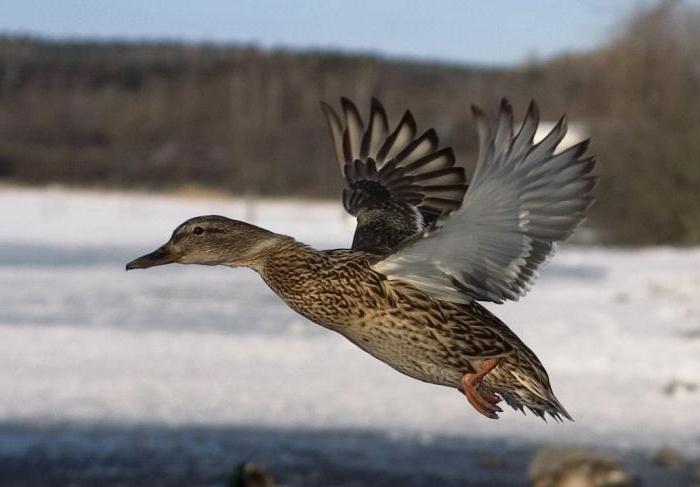Birds are a unique group of homeoteric organisms whose lifestyle is associated with an ability such as flying. It is possible under the condition of hard work of the muscles of the sternum and forelimbs - the wings. This process, in turn, is ensured by the continuous supply of myocytes with oxygen and nutrients, especially glucose.
Blood is a substance that carries them throughout the body, and its movement depends on the intense activity of the heart - a pump that tirelessly pumps liquid connective tissue. The transfer of oxyhemoglobin and organic substances is carried out by the circulatory system of birds. The heart is the main organ that provides blood circulation. Features of its structure and function will be considered in this article.
Features of the circulatory system
Intensive metabolism in birds is possible for two reasons. The first is high blood pressure, which causes a high speed of blood flow in the arteries and even veins. The second is the specificity of the blood supply to the lungs. The feathered heart has four chambers, its left and right parts are not communicated (there is a complete septum), therefore, the blood does not mix: in the left part arterial moves, and in the right - venous. The metabolism of birds is influenced by a factor such as the passage through the kidneys of not only arterial (as in mammals), but also venous blood through the portal system of blood vessels, therefore uric acid is formed in their liquid metabolites instead of urea. Further: blood cells - red blood cells - in the Aves class have nuclei, which increases the lifespan of these cells. The largest arterial vessel, the aorta, comes out of the left ventricle of the heart. It has a right arc, the bifurcation of which leads to the formation of the left and right nameless arteries, which provide the head and wings of birds with nutrients and oxygen.
Heart anatomy
Being a hollow muscle organ, it is located on the right side of the chest and is covered with a pericardium - a pericardial sac. In front of the sternum, the heart of the birds is partially covered by additional respiratory organs - air sacs. It has the form of a cone, the apex of which occupies an intermediate position between the stomach and liver.
Depending on the biological species of the bird, the shape of the heart can be different: from round-conical to ellipsoid-elongated. This circulatory system consists of three membranes: external - serous (epicardium), medium (myocardium) and internal (endocardium). The most important of them is the middle shell, on the structure of which the high activity and performance of the heart depends.
Myocardium
It is formed by striated muscle tissue of a special structure, which distinguishes the heart of birds from all other internal organs containing only smooth muscles. The internal arrangement of cardiomyocytes provides strength and evenly distributes the load during their contraction. Another major feature of the heart muscle is the independence of systoles and diastole chambers: atria and ventricles. Myocardial cells are intertwined with each other, so nerve impulses instantly radiate along cardiomyocytes, and the entire membrane is instantly reduced.
Heart cameras
Two atria - the left and right, as well as two ventricles have several features associated with the anatomy of the myocardium. Its wall is much stronger and thicker in the left half of the heart, since arterial blood is ejected from the ventricle under high pressure into the aorta and then enters the large circle of blood circulation. In the heart, blood always moves in one direction: from the atria to the ventricles and from the right to the pulmonary arteries, and from the left to the right aortic arch. Atrioventral valves, consisting of connective tissue: muscular and membranous, are located on the border between the chambers. They do not allow a portion of blood to return from the ventricle to the atrium. The heart of a bird, the structure of its chambers and valves depends on which systematic group it belongs to.

In newborn (true birds), the anterior left and right, as well as the posterior veins, fall into the right atrium independently, and in the ancient ones, the vena cava merge to form a sinus. Between him and the right atrium, two muscular valves are formed. The first group includes birds of the family pigeon-like, anseriform, passerine, woodpecker, etc. The second group is formed by cassowary, kiwi, and nanduiformes, also called wingless birds (flightless).
Circulatory Circles
As we have already mentioned, the heart of birds is four-chambered. Its structure determines two circles of blood circulation. The small circle (pulmonary) begins in the right ventricle, and ends in the left atrium. The large circle originates in the left ventricle. From the right aortic arch, arteries branch and bring oxygen and nutrients to the cells of all organs and tissues of the bird. Venous blood collects in the vena cava, which enter the right atrium, this ends a large circle of blood circulation.
The specificity of cardiac activity
Studying the main part of the circulatory system - the heart of the bird, the structure and functions of its chambers - we note that this organ has a sufficiently large size and mass relative to the weight of the body itself. For example, in birds such as bullfinches, crows, ducks about 1 - 1.3% of body weight, and in species with high speed and maneuverability of flight - up to 2%.
For example, in birds of prey - the white-tailed eagle, the falcon - the heart index is about 1.8%. In addition, birds have high blood pressure, and the pulse rate ranges from 200 to 600 beats per minute, and during the flight reaches 1200 heartbeats.
In this paper, we answered the question of what kind of heart is in birds by studying the features of the myocardium and characterizing the specifics of their cardiovascular activity.